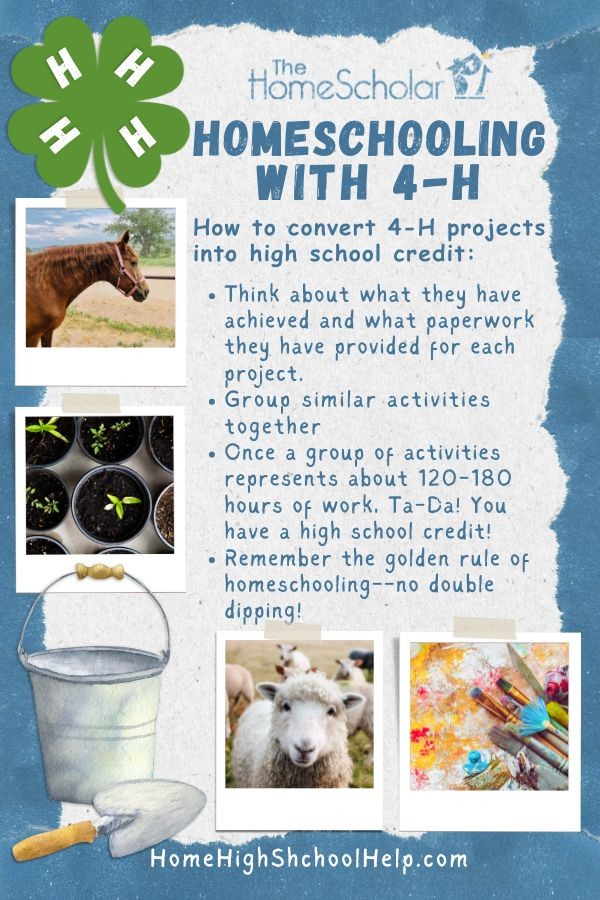
I love hearing about families involved in 4-H! As a rule of thumb, ALL 4-H activities are educational in nature, like Scouting is almost always educational in nature. It’s fun to discuss different ways to divide these activities into meaningful high school courses.
4-H Benefits for your Teen
Hands-on Learning: 4-H provides experiential learning opportunities in areas like agriculture, science, health, and citizenship, complementing academic studies. It can be easy to scoop up a bunch of elective and STEM credits through 4-H. Plus, for any kinesthetic students, hands-on learning is the best kind of learning.
Skill Development: Participants can develop a wide range of skills, from public speaking and leadership to practical life skills like gardening and animal care. These kinds of skills build more than just their transcripts. These skills can help personalize their college admissions essays, bring confidence to their interviews, and boost their overall career. A teen who knows how to present themselves well will never run out of opportunities, and a teen who knows how to garden will never go hungry.
4-H Credits on the Transcript
If your child is active in sewing or ceramics in 4-H, think about what they have achieved and what paperwork they have provided for each project. Label each activity with educational titles such as: fashion design, home economics, and textile crafts. Group activities together into similar clumps. All topics that go under art go into one group, and everything that counts as cooking goes into another group, and so on. Other homeschoolers may lump activities into science stuff or biology stuff depending on the nature of the activity. Nature Science could allude to survival, botany, earth science or more if you get creative. Once a group of activities represents about 120-180 hours of work, Ta-Da! You have a high school credit!
One of the great things about 4-H is the required paperwork. It can be a huge pain to do, but once your child has completed the paperwork you have some great documentation for high school classes. You can provide these as work samples if they are requested by colleges, and they can be the backbone of your course descriptions. A little work upfront can make your job much easier later!









